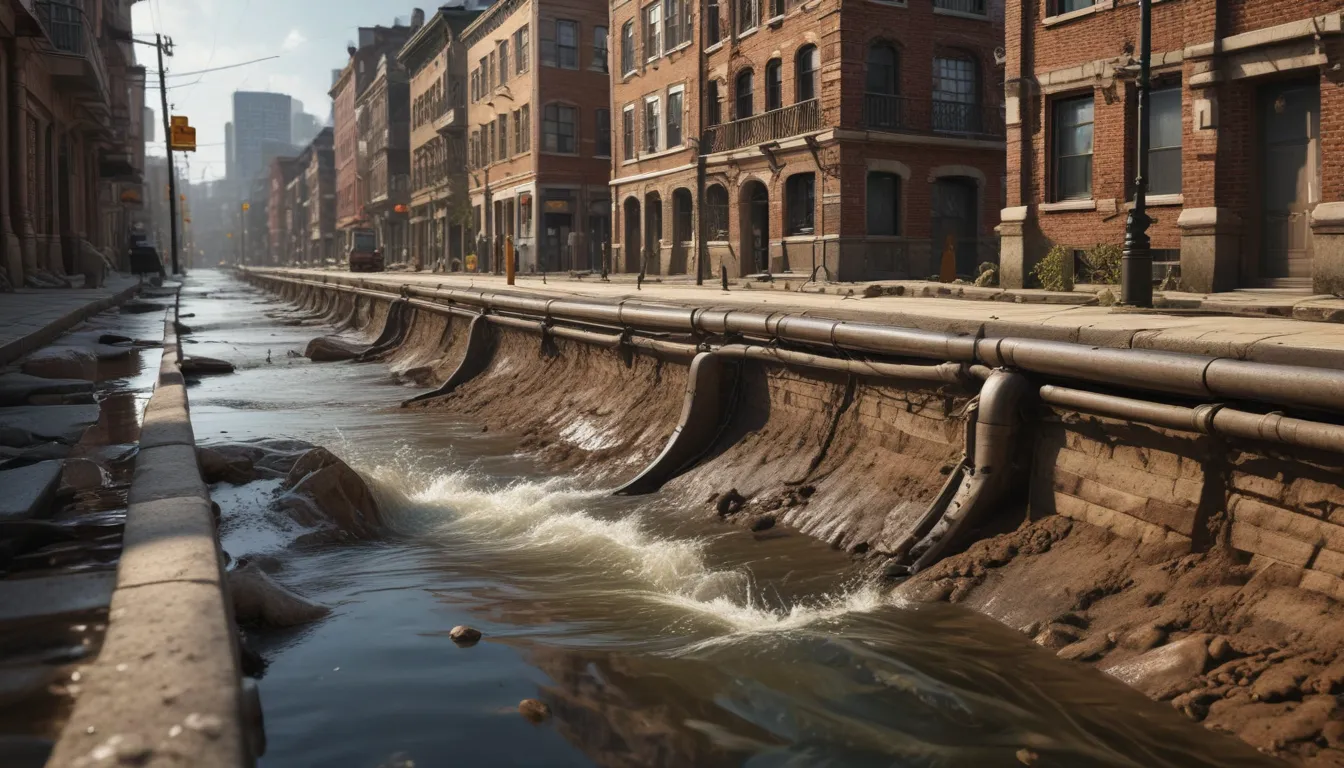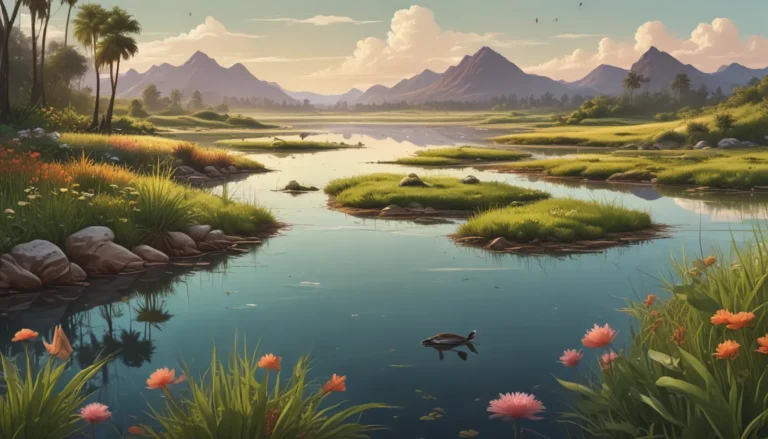A Note About Images: The images used in our articles are for illustration purposes only and may not exactly match the content. They are meant to engage readers, but the text should be relied upon for accurate information.
In the hustle and bustle of city life, it’s easy to overlook the unsung hero that quietly ensures the smooth operation of our communities – the drainage system. While skyscrapers and historic landmarks steal the spotlight, the intricate network of pipes and channels beneath our feet plays a crucial role in managing water flow, preventing floods, and maintaining the overall well-being of residents.
Unlocking the Mysteries of Drainage Systems
Let’s dive into the fascinating world of drainage systems and uncover 16 astounding facts that will leave you with a newfound appreciation for these essential infrastructures.
1. The Ancient Roots of Drainage Systems
Dating back to ancient Mesopotamia around 4000 BCE, the earliest known drainage systems were developed to manage water resources and facilitate agricultural irrigation. These sophisticated systems laid the foundation for modern-day drainage practices.
2. Beyond Surface Water
While surface water drainage is commonly recognized, drainage systems also encompass subsurface drainage through underground pipes and drains. This comprehensive approach ensures effective water management across various landscapes.
3. Clogged Drains: A Common Nuisance
Debris, sediment, and other materials can obstruct drainage systems, leading to standing water and potential property damage. Regular maintenance is essential to prevent such blockages and ensure optimal functionality.
4. Eco-Friendly Alternatives
In a bid to minimize environmental impact, sustainable drainage systems (SuDS) have emerged as eco-friendly alternatives. Utilizing natural methods like rain gardens and permeable pavements, these systems aim to reduce water runoff and promote ecological balance.
5. Global Diversity in Drainage Practices
From urban metropolises to rural landscapes, each region faces unique challenges that shape their drainage systems. Factors like climate, topography, and infrastructure development influence the design and implementation of drainage solutions worldwide.
6. Rome’s Ancient Legacy
Rome boasts a rich history of drainage innovation, exemplified by the Cloaca Maxima. Constructed over 2,500 years ago, this sewage system remains a testament to ancient engineering prowess in managing water and waste.
7. Climate Change Resilience
With the growing threat of climate change, well-designed drainage systems play a pivotal role in mitigating the impact of extreme weather events. By effectively managing heavy rainfall and storms, these systems contribute to community resilience.
8. Urban Development Enablers
Cities heavily rely on drainage systems to manage stormwater runoff, safeguard urban structures, and maintain public infrastructure. The intricate network of drains and channels ensures the integrity of urban landscapes amidst rapid development.
9. Soil Stability Guardians
Beyond water management, drainage systems contribute to soil stability by preventing erosion and waterlogging. This crucial function ensures a solid foundation for construction activities and agricultural practices.
10. Maintenance Matters
To uphold the efficiency of drainage systems, regular maintenance is imperative. Periodic inspection, cleaning, and repair help address potential issues and uphold the functionality of these vital infrastructures.
Embracing the Power of Drainage Systems
In conclusion, the unassuming drainage system emerges as a silent yet indispensable force that sustains the vitality of our cities. Through effective water management, flood prevention, and sanitation upkeep, these systems safeguard the well-being of residents and the longevity of infrastructure.
As we unravel the mysteries and marvels of drainage systems, let us cultivate a deeper appreciation for the intricate network that quietly navigates the flow of water beneath our feet. The next time you encounter a storm drain or wastewater treatment plant, remember the remarkable blend of engineering and technology that fuels these essential lifelines.
Unveiling the Truth Behind Drainage Systems: FAQs
Q: What is a drainage system?
A: A drainage system comprises underground pipes, channels, and structures designed to collect and transport excess rainwater, surface water, and wastewater away from residential, commercial, and industrial areas.
Q: Why is a drainage system important?
A: Drainage systems are vital for flood prevention, water damage reduction, public health protection through wastewater management, and infrastructure preservation.
Q: How does a drainage system work?
A: By utilizing gravity, a drainage system transports water through a network of pipes, channels, and gutters towards designated discharge points such as rivers, lakes, or treatment plants.
Q: What innovative technologies enhance modern drainage systems?
A: Sustainable drainage systems (SuDS), permeable pavement, rainwater harvesting systems, and smart monitoring tools are among the innovative technologies revolutionizing modern drainage practices.
Q: Are drainage systems exclusive to urban areas?
A: No, drainage systems are utilized in both urban and rural settings. While urban systems tend to be more complex due to higher population density, rural areas also benefit from drainage solutions to manage water resources efficiently.
Q: How can one maintain a drainage system?
A: Maintaining a drainage system involves keeping drains and gutters clear of debris, conducting regular inspections, and promptly addressing any damage or blockages. Seeking advice from professionals can optimize the upkeep of drainage systems.
As we navigate the realm of drainage systems, let us embrace the wisdom and wonder that underlie these essential infrastructures. By acknowledging their pivotal role in urban infrastructure and environmental stewardship, we pave the way for a future grounded in resilience and sustainability.






